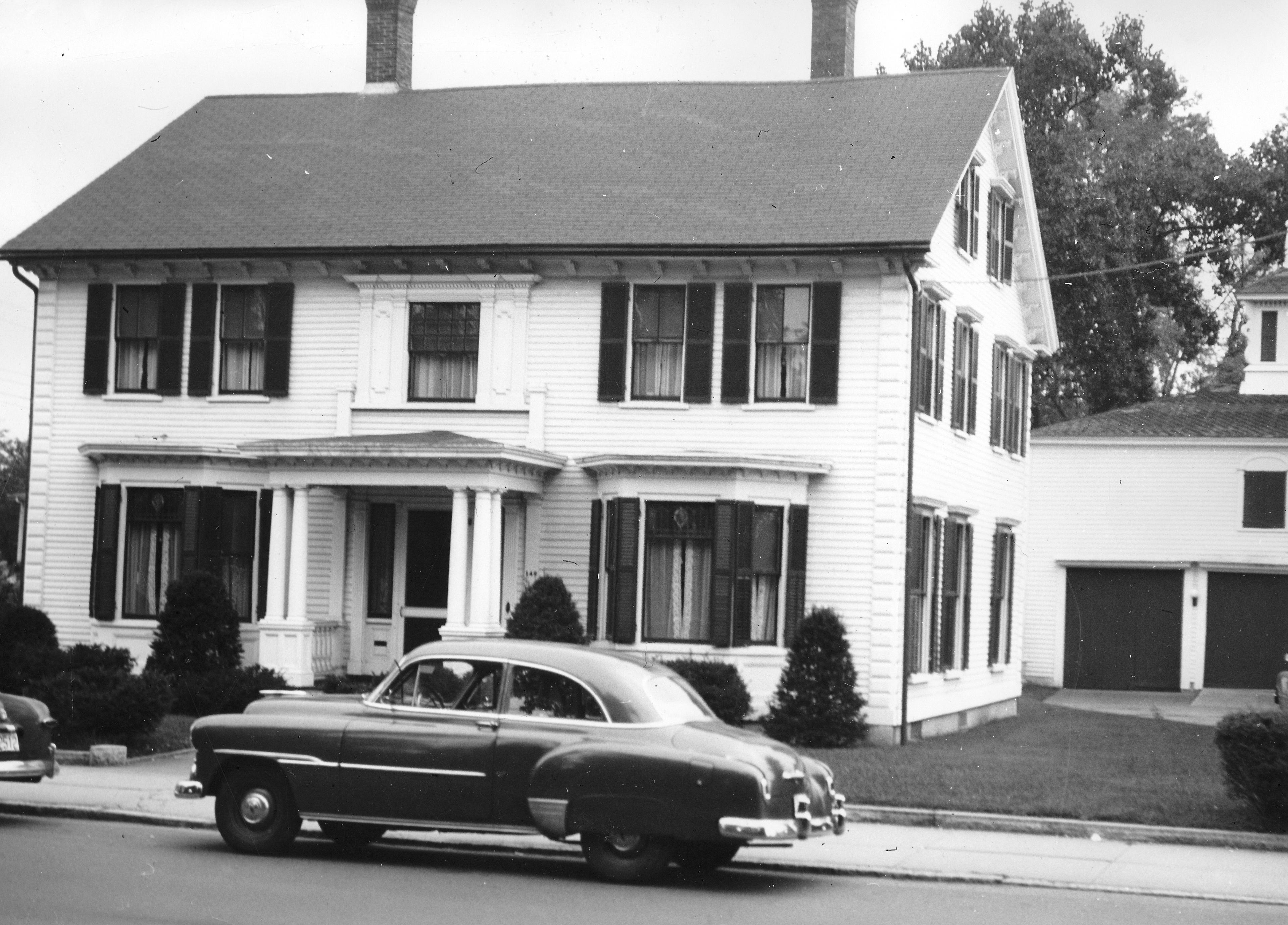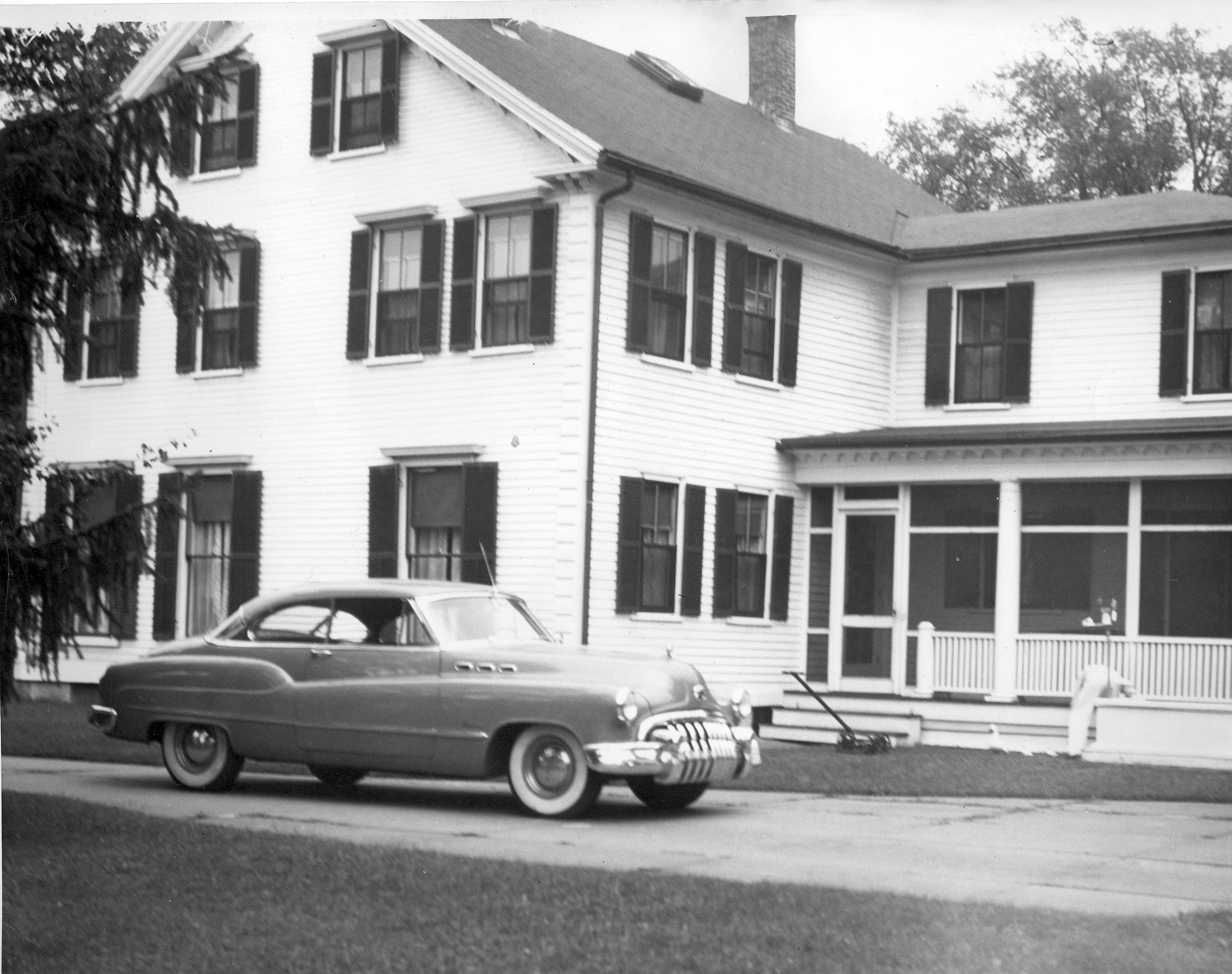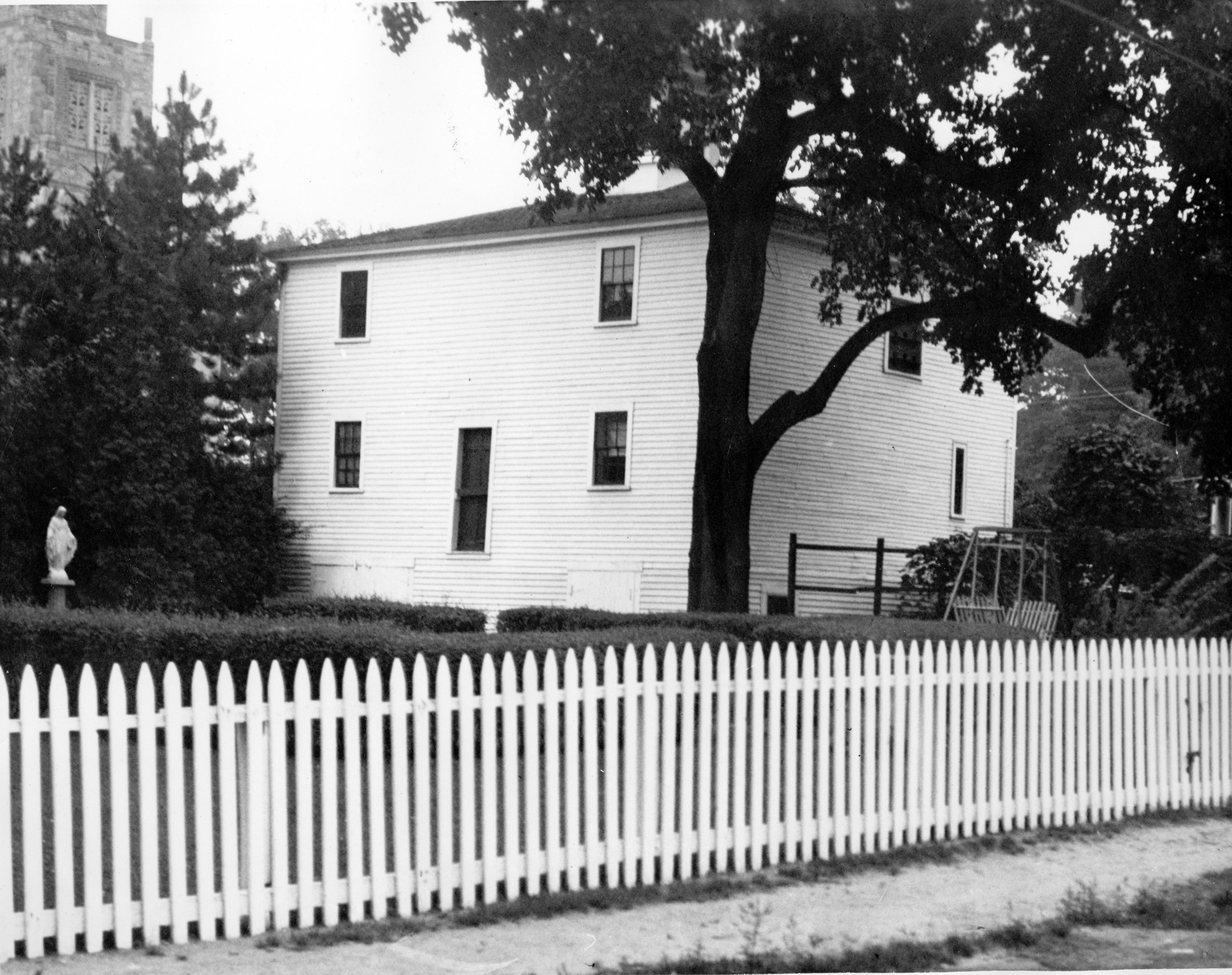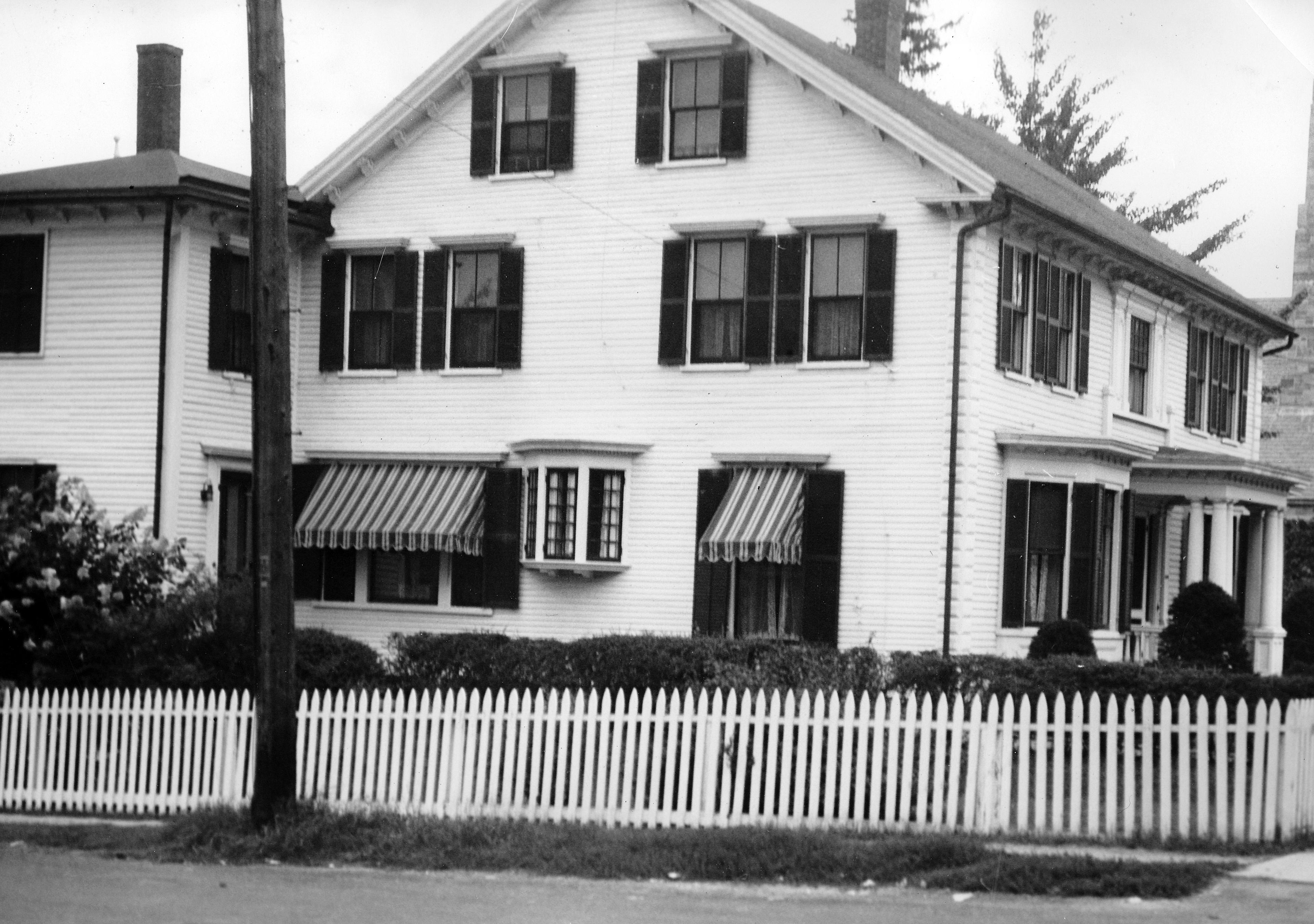Disclaimer
The Dover Public Library website offers public access to a wide range of information, including historical materials that are products of their particular times, and may contain values, language or stereotypes that would now be deemed insensitive, inappropriate or factually inaccurate. However, these records reflect the shared attitudes and values of the community from which they were collected and thus constitute an important social record.
The materials contained in the collection do not represent the opinions of the City of Dover, or the Dover Public Library.
Wendell-Trickey-Coogan-Carberry House

146 Central Avenue
This house, built between 1780 and 1827, was occupied first by cloth manufacturer Isaac P. Wendell, who was involved with John Williams in the establishment of the Dover cotton mills at the Lower Falls of the Cochecho. The home has quoined corners and a separate carriage house with cupola. The bay windows, with leaded glass, and the entrance canopy were later Victorian additions. Dr. Jasper York lived here 1869-1874, but by 1876 the home was owned by Charles H. Trickey (1833-1896), wealthy wood and coal dealer. Trickey was the fuel supplier to the Cocheco mills, some 10,000 tons per year by the 1880s, and a director of the Dover Navigation Company which named one of its schooners after him in 1879.

About 1890, Trickey gave the cowpath next to his house to the city on the condition that the new street be named “Trakey”--- he was not happy with his surname. After his death in 1896, Charles’ widow Georgette occupied the house until about 1909.
Owen Coogan, who had lived first at 134 Central Avenue, then at 8 Trakey Street, bought the home between 1910 and 1912. Coogan, by 1935, was president of Merchants Bank. Owen and Annie Coogan’s daughter Margaret married Herbert Carberry in the 1940s and the home is still owned by the Carberrys today.
From the 1987 Heritage Walking Tour booklet



This historical essay is provided free to all readers as an educational service. It may not be reproduced on any website, list, bulletin board, or in print without the permission of the Dover Public Library. Links to the Dover Public Library homepage or a specific article's URL are permissible.
